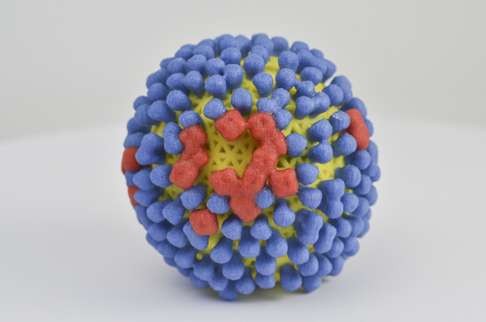
When you were born predicts your odds if flu pandemic strikes
We are not blank slates with regard to how susceptible we are to emerging strains of flu virus, researchers have discovered. The findings could provide important information for the development of a universal flu vaccine

It was believed that previous exposure to a flu virus conferred us little or no immunological protection against new influenza viruses that can jump from animals into humans. But a new study goes against this conventional wisdom: your birth year predicts – to a certain extent – how likely you are to get seriously ill or die should an outbreak of an animal-origin influenza virus happen.
Researchers studied two avian-origin influenza A (“bird flu”) viruses, H5N1 and H7N9, each of which already has caused hundreds of spillover cases of severe illness or death in humans, including in Hong Kong and mainland China. Analysing data from every known case of severe illness or death from influenza caused by these two strains, the researchers discovered that whichever human influenza strain a person happened to be exposed to during his or her first infection with flu virus as a child determines which novel, avian-origin flu strains they would be protected against in a future infection. This effect of “immunological imprinting” appears to be exclusively dependent on the very first exposure to flu virus encountered in life – and difficult to reverse.

In the latest issue of the journal Science, the research team – a collaboration between the University of Arizona in Tucson and the University of California, Los Angeles – not only show there is a 75 per cent protection rate against severe disease and 80 per cent protection rate against death if patients had been exposed to a matched virus as children, but also that one can take that information and make predictions about H5N1, H7N9 and other potential causes of future pandemics.
When an individual gets exposed to flu virus for the first time, the immune system makes antibodies targeting hemagglutinin, a receptor protein shaped like a lollipop that sticks out from the virus surface. Like lollipops that come in different colours and flavours, influenza viruses differ from each other in the parts that make up their hemagglutinins. But each of the 18 known influenza A virus hemagglutinin subtypes falls into one of just two main “flavour” groups.
Michael Worobey of the University of Arizona, one of the study’s two senior authors, explains: “In this analogy, let’s say you were first exposed to a human ‘orange lollipop’ flu as a kid. If later in life you encounter another subtype of flu virus, one from a bird and one that your immune system has never seen before but whose proteins also are of a similar ‘orange’ flavour, your chances of dying are quite low because of cross-protection. But if you were first infected with a virus from the ‘blue lollipop’ group as kid, that won’t protect you against this novel, ‘orange’ strain.”

All 18 subtypes of influenza A virus hemagglutinin circulate in non-human hosts, primarily birds. But only three – H1, H2 and H3 – have circulated in humans over the past century. In the lollipop analogy, people born before the late 1960s were exposed to “blue lollipop” influenza as children (H1 or H2). The researchers found that these older groups rarely succumb to avian H5N1 – which shares a “blue” hemagglutinin – but often die from “orange” H7N9. People born after the late 1960s and exposed to “orange lollipop” influenza as children (H3) show the mirror-image pattern: They are protected from H7N9 but suffer severe disease and death when exposed to H5 viruses mismatched to their childhood exposure.
Worobey says future research should try to elucidate the exact mechanism underlying the immunological imprinting and finding out possible ways to modify it with a vaccine.